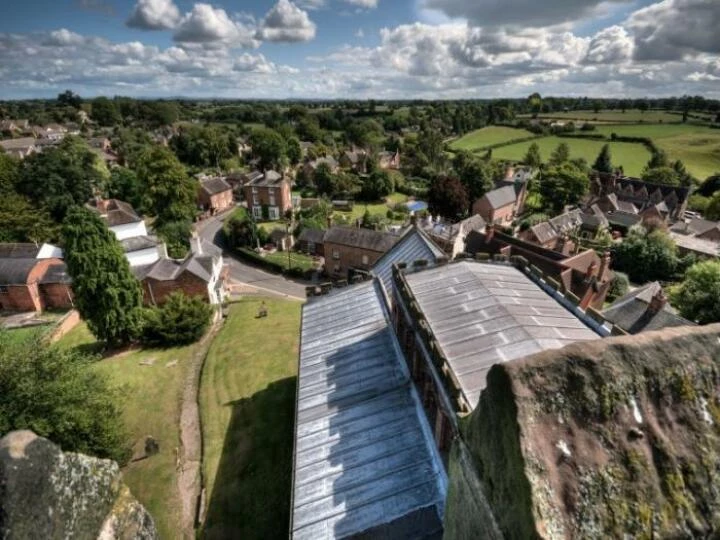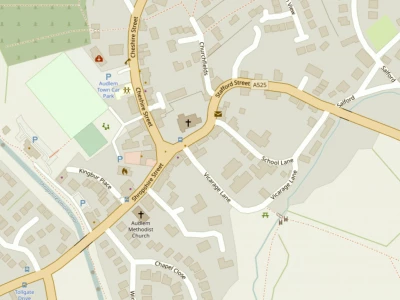
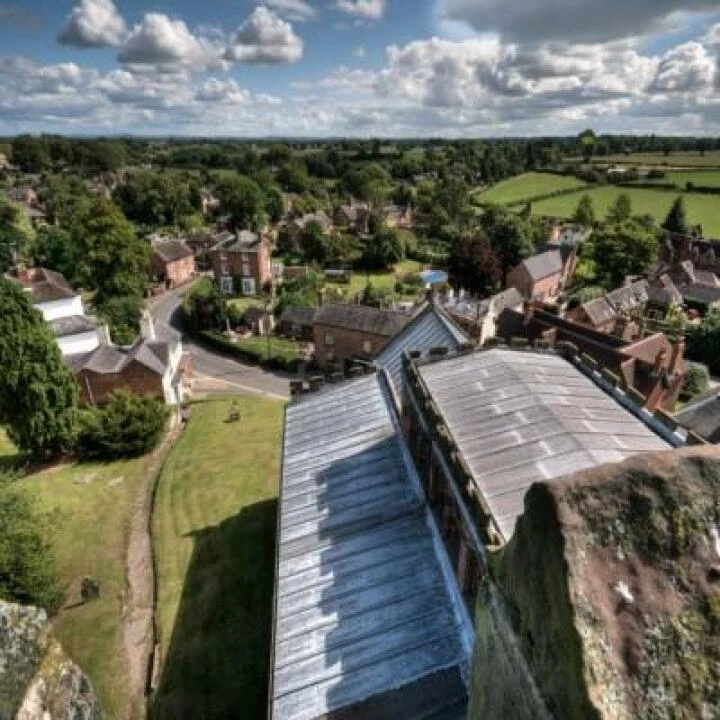



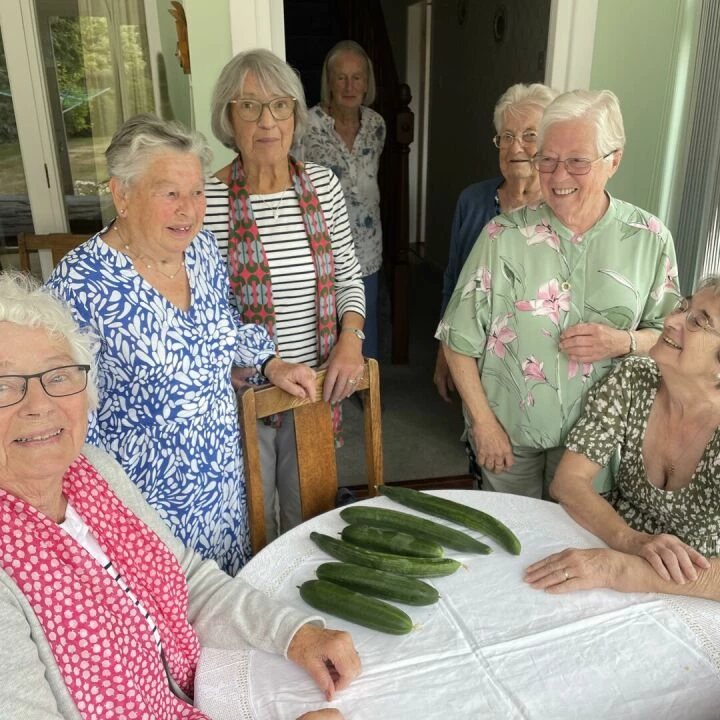

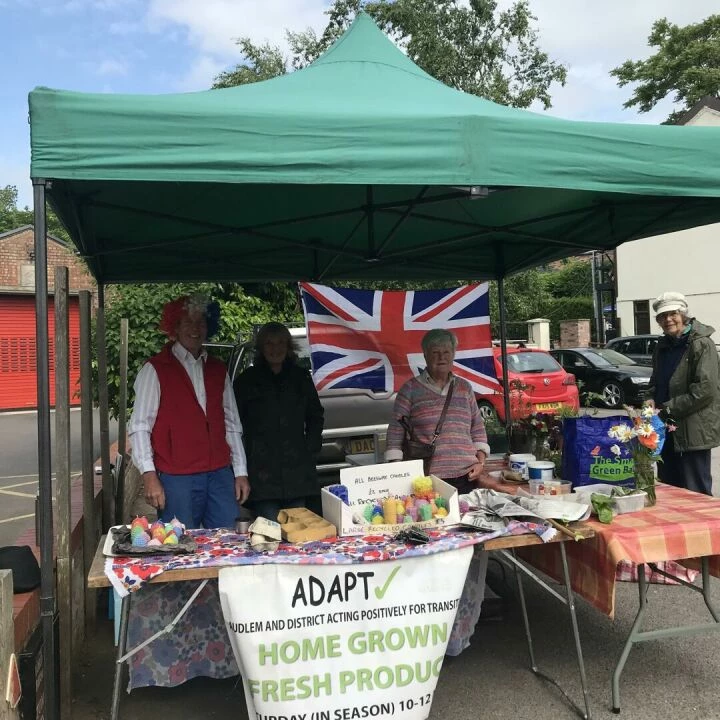
Today, we continue David Ackerley's account of working as a pupil on a dairy farm in 1951. You can read the first instalment of this fascinating article in yesterday's news on AudlemOnline.
Our thanks to Janet Maughan for sending us David's article.
As you know, the mill, owned by the Cheshire, Shropshire and North Wales Farmers Supply Association (CFA), the forerunner of NWF Agriculture, was active in those days and employed about 8 men.
Some of them lived in the cottages by the mill and they used to help out with harvest in the evenings and at weekends.
They were a cheerful lot and made the hard work of carting and stacking the wheat quite a festive occasion. They probably helped with the hay as well, but I can't recall anything about that caper.
Again I cannot recall ever having been present at a calving nor can I remember cows being put with the bull, but I must have seen both those activities; old age has a lot to answer for! One of the worthies who lived by the mill liked a drink or two and cycled back and to from his local in Audlem.
Legend as related by Dick, has it that before my time on one of the many occasions when he (the Mill man, not Dick!) was well over the eight, he fell down the bank into the stream by the drive to the mill, and spent the night there as he was too drunk to get back up the bank.
The wheat and oats were stacked in a large barn which occupied the site where your farm office is now, and the threshing machine, tractor and stationary baler were set up in the cobbled alley between the barn and the "Bonny" building. The chaff was blown into one of the boxes in this building and the large wire tied bales were stacked in the barn.
The threshing gang were responsible for stacking the bales which were carried on the men's back up a ladder to the top of the barn; quite a feat of strength. George frowned on elevators as they had an engine. We were given the job of carrying the bags of grain up some stairs in the building at the end of the alley, the bags being never less than 1 cwt and generally more; it's a wonder we didn't get a hernia. The whole job of threshing took about two days I think, and despite the noise, dust and hard work it was an enjoyable occasion, though two days were quite enough!
The two houses built next to your drive at the top of the rise from the river had only just been constructed when I began, and Dick took me round them one evening when they were waiting to be decorated. George built them with the intention of housing future workers in, but they were still empty when I left.
In 1923 the farm was caught up in the awful outbreak of Foot and mouth disease and all the cattle were slaughtered. They were buried in the Sand hole Field and according to Dick he had seen the occasional bone poking through, but I never saw one, and I'm not sure that he had either; he told some weird tales at times. An extract from the article below is relevant:
'A devastating want of knowledge': Doctors, vets and the 1924 foot and mouth disease controversy
Abigail Woods
Between 1922 and 1924, Britain experienced two extensive epidemics of foot and mouth disease (FMD), a highly contagious disease of cloven-footed animals. Endemic FMD had been eliminated from the nation 40 years previously, under a series of legislative measures designed to prevent the importation and domestic spread of infection.
During the intervening years, FMD had re-invaded occasionally from abroad, but outbreaks were quickly stamped out. Under the direction of the Chief Veterinary Officer (CVO) of the Ministry of Agriculture and Fisheries (MAF),2 diseased livestock and their contacts were slaughtered, local markets cancelled and livestock movements halted. In January 1922, early FMD outbreaks evaded notice, and infection spread rapidly throughout the nation.
It took eight months to eliminate the disease, by which time 56,000 livestock had been slaughtered in response to 1,140 outbreaks, costing the nation £1.25m in compensation. One year later, a second epidemic took hold. Between August 1923 and May 1924, nearly 300,000 livestock lost their lives as a result of 2,691 outbreaks. Compensation costs mounted to £3.3m.
Cheshire, which experienced 1,700 outbreaks, bore the brunt of this epidemic. The county lost 51,031 dairy cattle, amounting to one third of the Cheshire herd. In the worst affected areas, up to 60 per cent of farms were emptied of livestock.
There was another widespread National outbreak which began at the tail end of 1951 and in 1952 it spread to our locality starting at a holding at Hankelow. The farmer, whose name I forget, had pigs fed on pigswill which he neglected to boil properly, if at all. The disease affected every farm adjacent to the far side of the river from us all the way to Nantwich; all things considered, George was pretty relaxed about the prospects of his cattle getting the disease but luckily we were spared.
When I was farming on my own account near Chester I was also lucky in the 1967 outbreak; all our neighbours save one had their herds slaughtered, but we avoided it. Ten days before our next door neighbour's heifers got the disease, they broke into the field where our cows were, a fact we kept to ourselves. Being next door to an infected farm the Ministry Vets examined our animals twice a day for a week and then gave up due to being overwhelmed by the outbreak.
Food rationing had only just ended in early 1951 and under the wartime regulations a farmer was allowed to fatten and slaughter for his own consumption one pig every six months I think, or it may have been one a year.
At any rate George had a massive pig, about the size of a small rhinoceros, ready for slaughter sometime in the summer of 1952. This was done at the farm by Tom Northen, a butcher in Audlem, and a right gory business it was too. After the pig had been bled and gutted by being cut open all down its belly, it was hung up overnight by its front feet in the back entrance to the house which everyone used and hung there like an open book.
I went out somewhere or other that night and came back in the dark completely forgetting about the carcass and walked straight inside it. That was a rare fright! Tom cut the animal up and did whatever had to be done to preserve the meat. The sides of bacon and the hams were then hung up in the room where we changed our boots and overalls. The bacon was the most dreadful stuff I have ever eaten, being virtually all fat with the occasional bit of lean visible, but George and Hetty thought it was good stuff. I have never liked fatty bacon since.
In case I have given the impression that life was all work and no play, I must emphatically state that that was not the case! We were all members of Nantwich Young Farmers Club and attended most of the dances that were organised by that excellent club as well as ones held in Audlem. The YFC dances were generally held at Nantwich Civic Hall and were irreverently referred to as "Heifer markets"!
The Civic Hall opened for business on 1st December 1951 and all three of us attended the first YFC dance held there. I don't know what happens at dances nowadays, but then the lads would pack one end of the hall, always at or very near to the bar, whilst the girls would stand at the other end giggling and discussing the talent.
Eventually some well scrubbed lad would pluck up the courage to ask his target for a dance, which was the signal for the other lads to follow, provided they could bear to leave the bar. If accepted, they would stagger about the sprung wooden floor, with the girl, who was almost always a good dancer often suffering battered feet from the clumsy lad whose balance was not helped by the contents of the bar! After the encounter was over both parties would retreat to their safe haven and resume watching each other. Happy days!
These dances were of the black tie variety and so long as Dick was going Peter and I had the luxury of being driven in George's 6/80, but if Dick was not going we had to go on our bikes.
On one occasion Peter and I had had enough by about half past midnight and struck off on our bikes from the Civic Hall for Hankelow riding the wrong way down a one way street-Pillory St. I think it was. A loud voice shouted "Oi, you lads, stop"
The local policeman pounding his beat had criminals in his sight, or that is what you might have thought by the interrogation he gave us. Where did we live, what were our names, why were we dressed like penguins? Eventually after many threats and a good telling off we were allowed to go on our way, pushing the bikes until we were out his sight, and then got back on.
We also took part in speech making competitions and I played football for the Club on one occasion having been "volunteered" for the job by Dick. All this going out could be a bit wearing especially when we had to be up early, and in one week all three of us attended dances on three consecutive nights, getting home about 0130 hrs at the earliest.
After the third night out I had no recollection of getting up next morning; I came to my senses to find myself in the shippon milking wondering how I got there, and the other two were not in much better state either.
It was at one of the Nantwich YFC's dances that I met a farmer's daughter, 16 at the time, who ten years later became my wife, and I'm delighted to say we have been very happy together for 54 years. Hetty Walmsley was very friendly with the lady who sold tickets at the cinema in Nantwich, and if you took a girl to the flicks there, Hetty would know her name almost before you did!
Wednesday was a half day and unless harvesting intervened, we invariably went to Market Drayton once the milking and feeding was completed. Once there George wandered off to talk to his cronies leaving us to meet him back at a specified time and place.
These trips were a chance to get your hair cut, do a bit of shopping and wander round the cattle market watching the Auctioneers working their magic. The smaller animals-pigs, sheep and such like, were housed in small pens, with two rows being back to back. Down the middle and on top of the penning hurdles was a plank along which the Auctioneer and his assistant walked to enable them to spot all the bidders.
On one occasion I was watching the pigs being sold, in this case a sow with a litter. She appeared to be asleep in a corner of the pen when one of the Auctioneer's sheets dropped into it; his assistant, a lad of about 16, jumped down into the pen to retrieve the paper. This upset the sow and in a flash she was up and charging at him to defend her litter; the Auctioneer leant down, put a hand under an arm and pulled him up. The sow bit the heel off the boot she had grabbed at, fortunately without hurting the lad who was as white as sheet!
The assembled audience all burst out roaring with laughter, but it could have been very nasty; until I saw that incident, I would not have believed that any animal, especially one apparently asleep, could have moved so fast from a lying down start as it were.
At the back of the house there was a rather decrepit orchard of some sort; I can't remember all the trees but there were two large and ancient damson trees which had to be harvested like all the other crops. Dick was sent up to the top of the trees by way of a very long ladder whilst Peter and I collected from stepladders and George picked at ground level.
The picking of the damsons was done after breakfast immediately before we went to Drayton, and it was a lengthy process as George was determined that all the fruit would be collected, no matter how difficult it was to get at. In the end we had a 1cwt bag about 3/4s full; this was placed carefully in the boot of the car. George sold the damsons to a market trader for 3d a pound as I recall.
I hope that I have not conveyed the view that George was way behind the times or that he treated us badly, because he didn't. His system of farming was basically that common to the vast majority of dairy farms in the area, but differed by his reliance on horses and by his reluctance to use tractors.
On Sunday evenings in the summer he would take us all off for a drive round the area looking at other farms and making critical remarks about the state of their crops and stock; just what happens nowadays in fact! It always ended up at Prees Heath where we had ice creams.
We were well looked after and I enjoyed my time there, though from a technical point of view it would have been better if I had worked on a more modern holding. Still, I was happy in my work and that is worth a lot.
David Ackerley. 31.03.15.
This article is from our news archive. As a result pictures or videos originally associated with it may have been removed and some of the content may no longer be accurate or relevant.
Get In Touch
AudlemOnline is powered by our active community.
Please send us your news and views using the button below:
Email: editor@audlem.org

